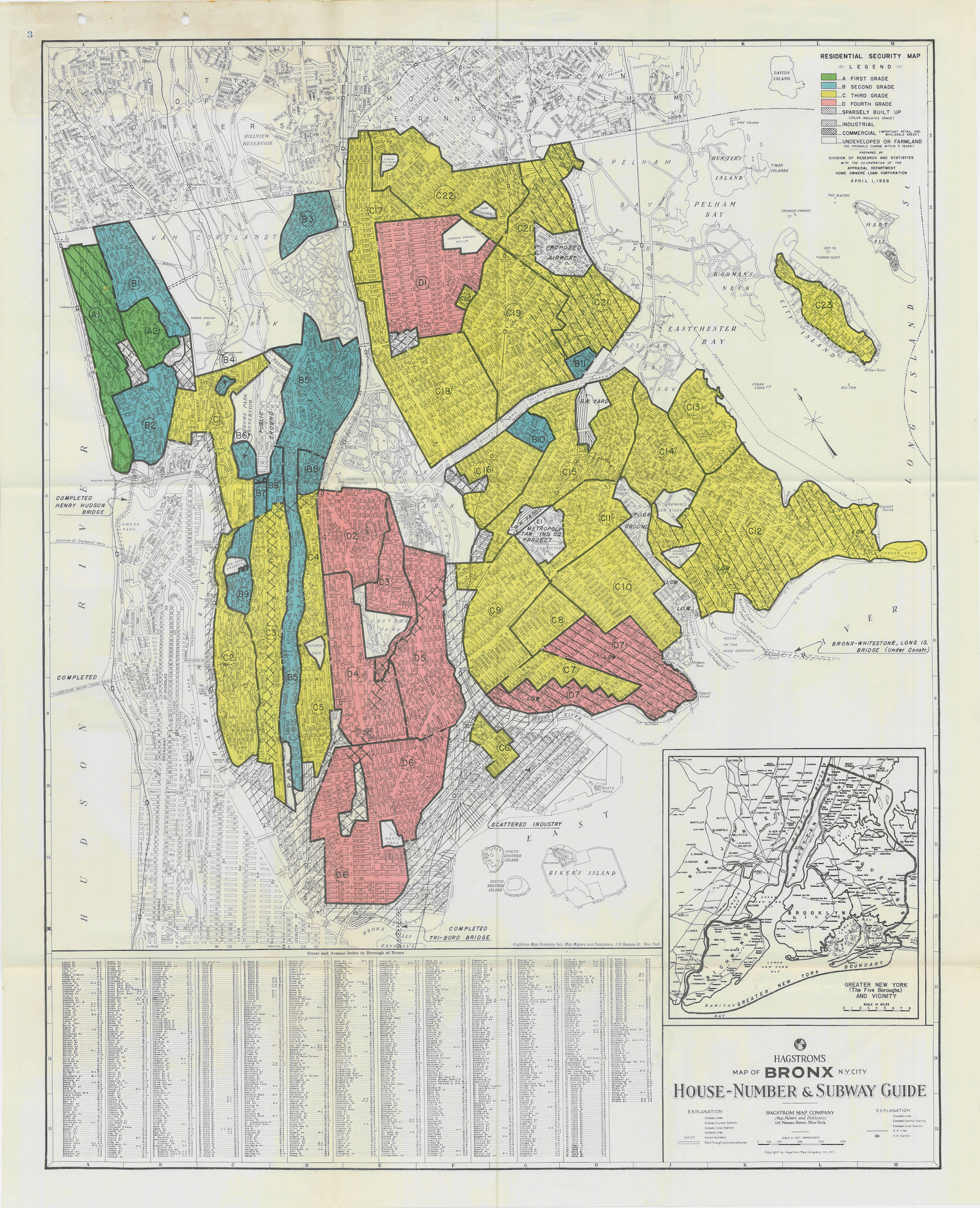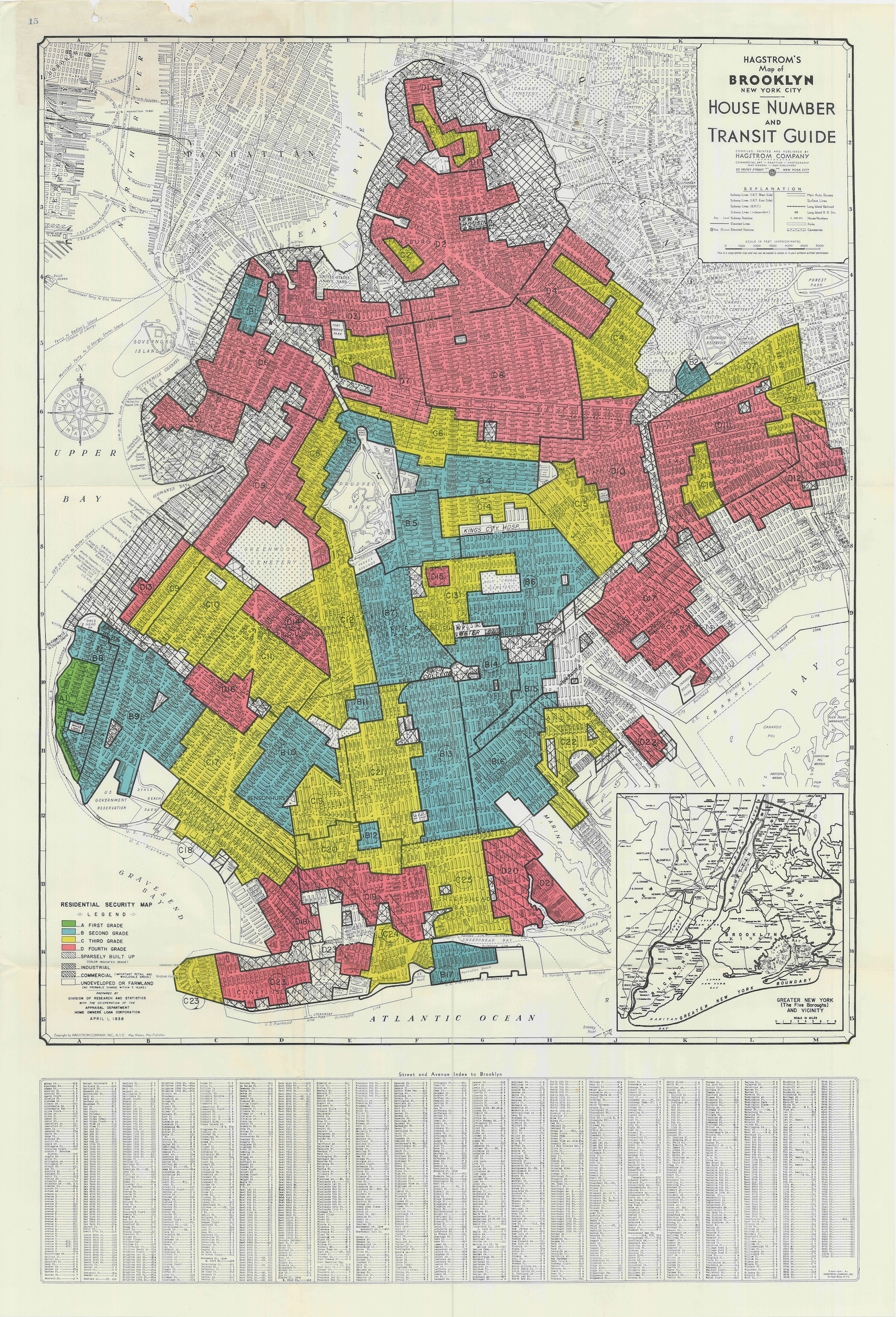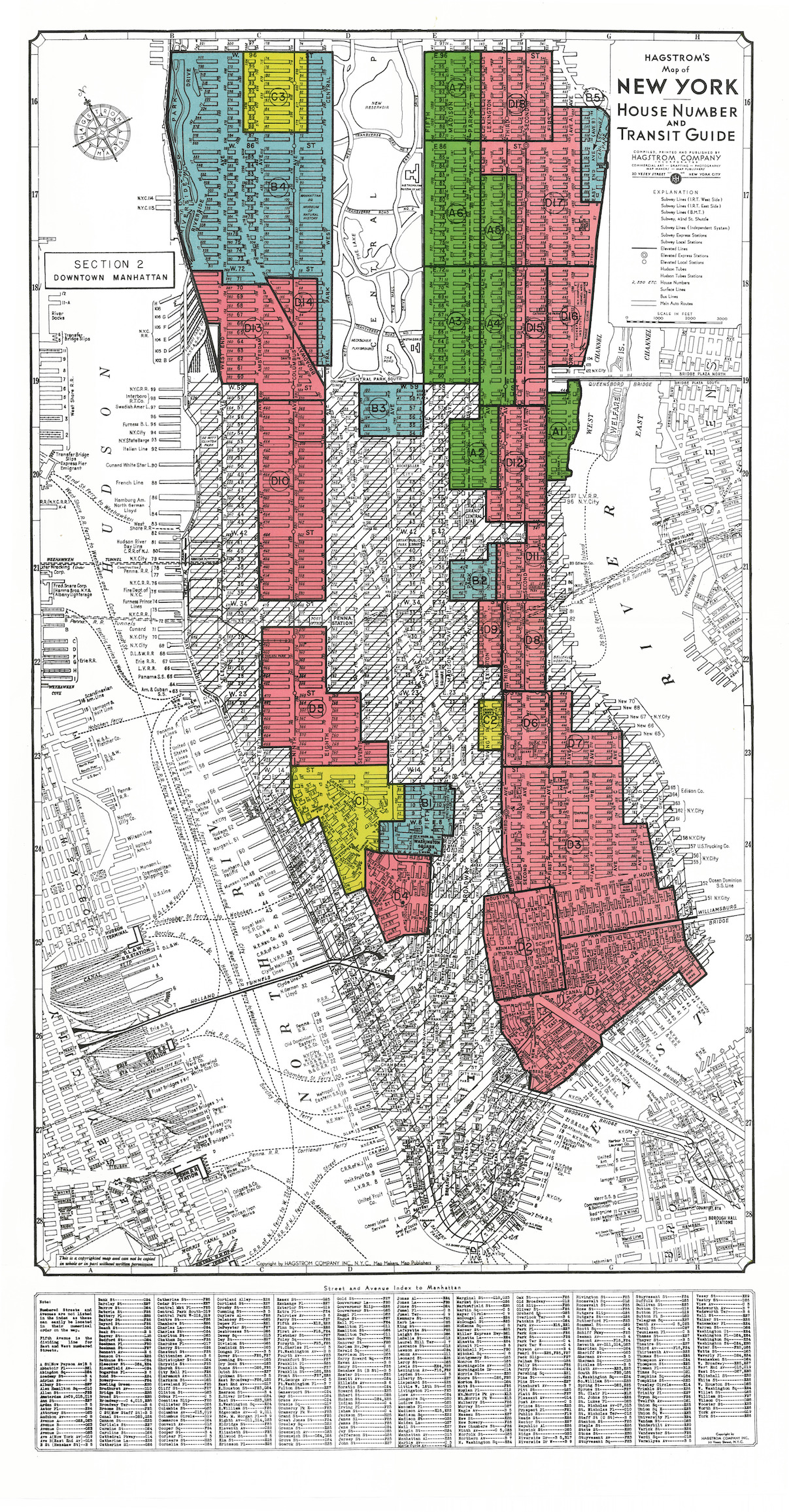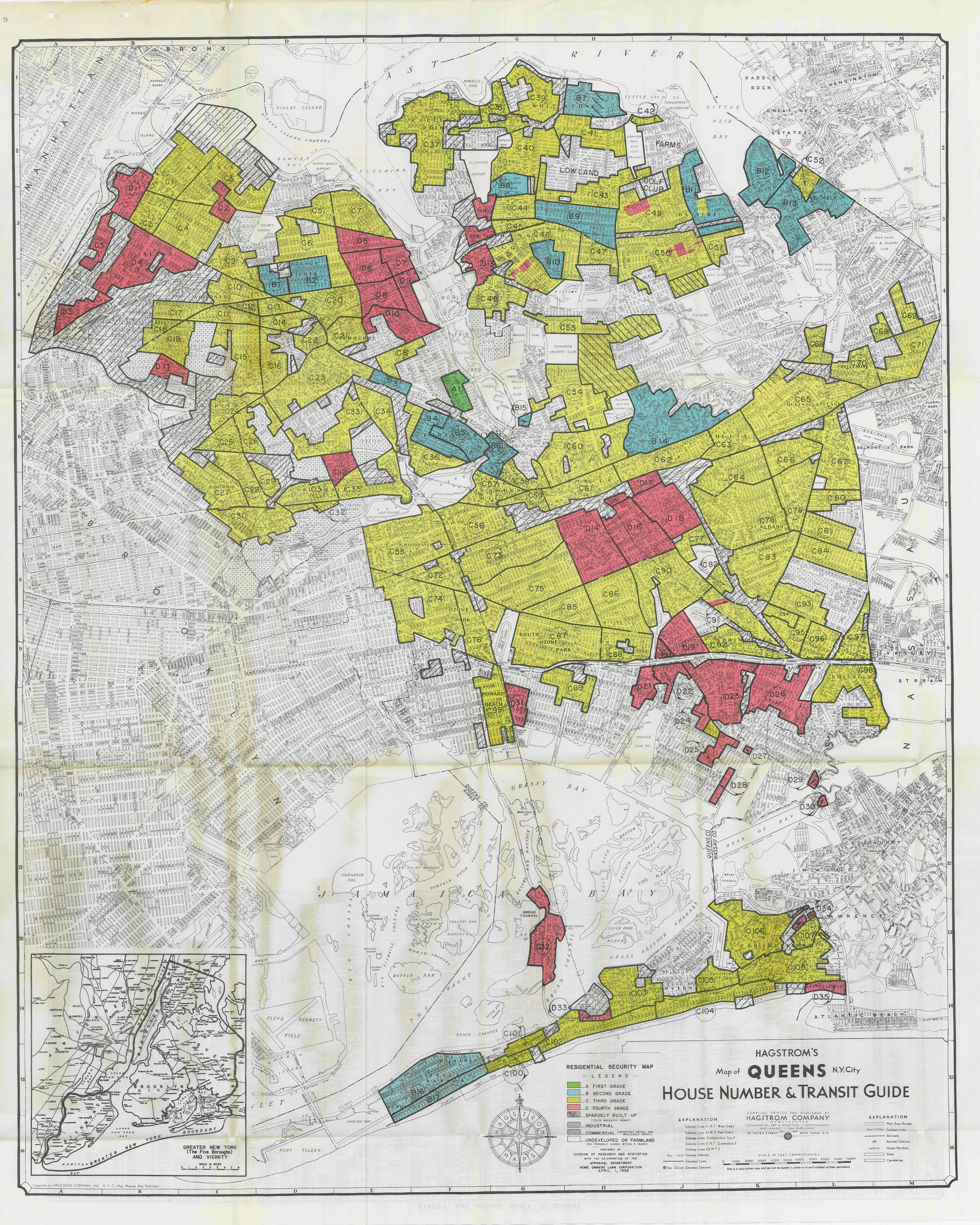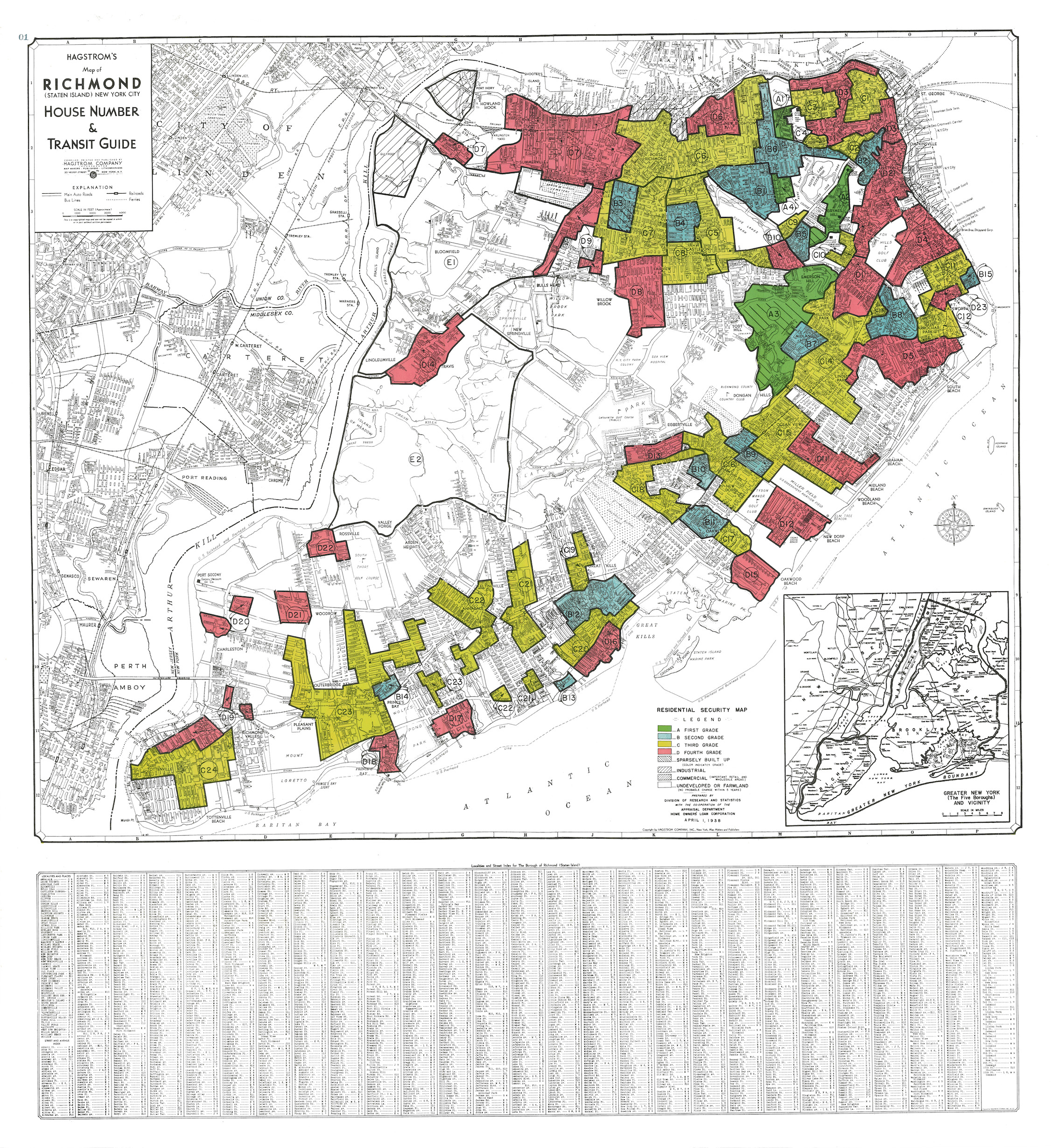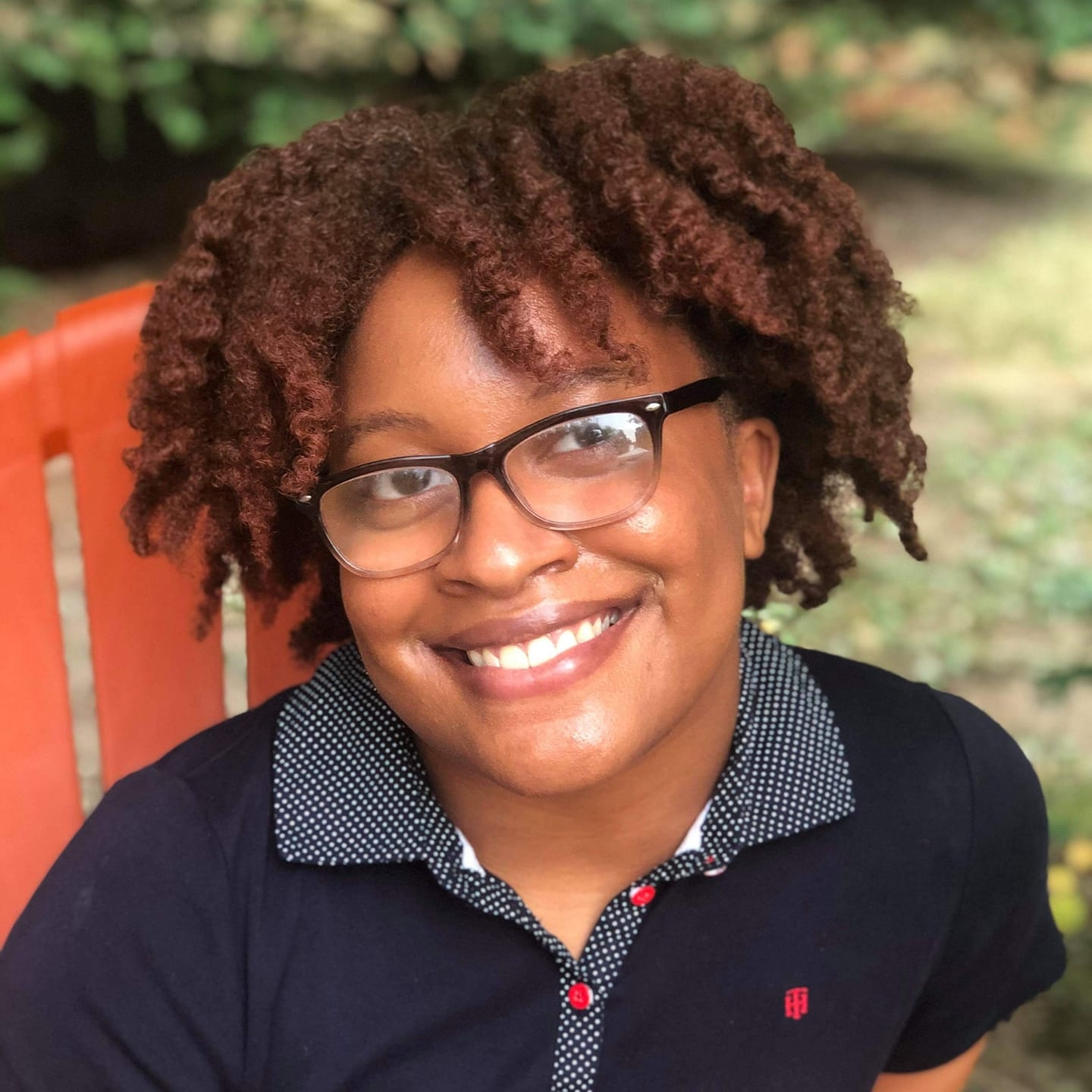Although New York City has a reputation as a liberal city, it has its own legacy of redlining.
Here are scanned images of the redlining maps for New York City's five boroughs: Bronx, Brooklyn, Manhattan, Queens, and Staten Island.
Here is a digitized redlining map for all of New York City, reflecting the HOLC Grades.
Grade “A” areas were marked green. These were in-demand affluent neighborhoods, with no Black residents.
Grade ”B” areas were marked blue. These were still considered good, but less desirable than Grade A areas.
Grade “C” areas were marked yellow. These neighborhoods were considered declining, and were often bordered by Black neighborhoods.
Grade “D” areas were marked red. These were typically completely populated by Black residents and were described by the HOLC as “undesirable”. These areas were ineligible for FHA backing.
How has the city evolved since then? What is the state of racial, social, and economic inequality today in New York City?
Rents have mostly kept increasing the past decade.
Real estate prices have increased even more.
But for most New Yorkers, their incomes aren't enough to cover a mortgage. Instead, many New Yorkers are forced to rent.
A lot of new housing was constructed over the last decade...
...but not enough new housing is being built for the people who need it most.
Instead, New York City has experienced more gentrification, resulting in evictions and displacement.
In 2017-2019, there were 57,774 residential evictions in New York City.
